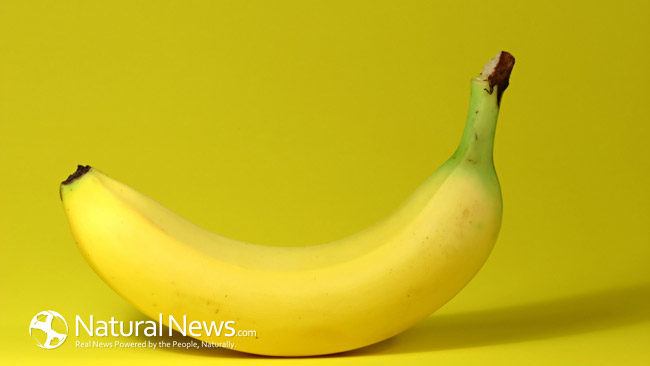In the middle of America’s corn belt, test participants are being paid $900 to be guinea pigs to eat genetically modified bananas from Australia that have been created in hopes of solving Uganda’s (and ultimately the world’s) vitamin A deficiency problem.
What is the rationale behind growing vitamin A enhanced bananas in Australia to feed Ugandans? And how did they wind up being tested in, of all places, Iowa?
Let’s unravel this puzzling turn of events — piece by piece.
Why Add Vitamin A to Bananas?
There are many foods that are already excellent sources of beta carotene (which gets converted in the body to vitamin A) so why add it to bananas?
Adding beta carotene to bananas seems like an odd pairing until you realize that bananas are a major staple in Uganda (kind of). And that Ugandans suffer from rampant vitamin A deficiency.
The average Ugandan eats 3 – 11 bananas daily. In Uganda the “banana” has the same importance that rice has in Asian cuisines.
But these are not the sweet bananas that we normally eat as a snack. These are plantains, specifically Musa cultivars, which are almost always eaten cooked, or occasionally ground into flour or used to make beer.
Here’s a short video that explains the importance of plantains to Ugandan cuisine and culture.
Unfortunately, these plantains are not very nutritious. Ugandan dependence on them is the root cause of this country’s rampant vitamin A deficiency.
Vitamin A deficiency is one of the leading causes of preventable blindness and infant deaths throughout Uganda and other low-income communities around the world.
Why Test Australian Bananas in Iowa?
Now you might wonder why bananas intended for consumption in Africa are grown in Australia and tested across the globe in Iowa?
Blame the blaring inefficiency of this experiment – which spans 3 continents – on the Bill and Melinda Gates Foundation. First they funded Queensland University in Australia to grow the GM bananas. And now they’ve given Iowa State University a $10 million grant to test them. The university has received 22 pounds of frozen bananas to dole out to test participants over a period of six weeks. Blood tests will be done to monitor their vitamin A levels.
ISU Professor James Dale is working with five Ugandan PhD students on this project. His hope is to have the high vitamin A bananas in Ugandan fields by 2020.
Note that these are not the plantains Ugandans typically eat.
So far the GM bananas have had just one “successful” US trial – on gerbils.
There’s a Better, Low-Tech Solution
Mainstream media has been using words like “exciting” and “life-saving” to describe this experiment.
Besides the obvious problems with GMOs – environmental hazards, economic concerns, and human health risks – there are other reasons this “super banana” is a dubious idea.
An earlier attempt by the Bill Gates Foundation to introduce vitamin A rice in the “Golden Rice Project” was a complete failure. There’s little reason to think the super banana will fare any better.
There’s a very simple solution to this problem — getting people to diversify their diet. The top vitamin A sources include sweet potatoes, carrots, squash, melons, various kinds of leafy green vegetables, and bell peppers. These are all foods that can be easily grown in any garden or even in containers.
Maybe Bill and Melinda should check out how easily these crops could even be grown in reusable grocery bags!
Bill Gates’ could better spend his money providing seeds and education so Ugandans could grow their own “real food” sources of vitamin A. Widespread deficiency could be reversed in a matter of months instead of waiting many years for a questionable outcome.
ABOUT THE AUTHOR:
Deane Alban holds a bachelor’s degree in biology and has taught and written on a wide variety of natural health topics for over 20 years. She teaches the best ways to stay mentally sharp for life at her website BeBrainFit.com. Brain fog, “senior moments”, and fuzzy thinking are signs your brain is not working as well as it should. Discover how to nourish your brain and optimize your brainpower — sign up for her email series 21 Days to a Brighter Brain here.
SOURCES:
http://www.scientificamerican.com/article/super-bananas-enter-u-s-market-trials/
http://www.bbc.com/news/world-africa-21945311
http://www.fruitnet.com/americafruit/article/161832/gm-bananas-to-undergo-human-trials-in-the-us
http://www.whfoods.com/genpage.php?tname=nutrient&dbid=106
http://www.naturalnews.com/045679_gmo_bananas_gates_foundation_scientific_mistakes.html
http://www.gmfreecymru.org/documents/golden_rice.html
http://www.grain.org/article/entries/10-grains-of-delusion-golden-rice-seen-from-the-ground





